1. Kjeldsen L, Johnsen AH, Sengeløv H, Borregaard N. Isolation and primary structure of NGAL, a novel protein associated with human neutrophil gelatinase. J Biol Chem. 1993; 268(14):10425–10432. PMID:
7683678.

2. Abella V, Scotece M, Conde J, Gómez R, Lois A, Pino J, et al. The potential of lipocalin-2/NGAL as biomarker for inflammatory and metabolic diseases. Biomarkers. 2015; 20(8):565–571. PMID:
26671823.

3. Clerico A, Galli C, Fortunato A, Ronco C. Neutrophil gelatinase-associated lipocalin (NGAL) as biomarker of acute kidney injury: a review of the laboratory characteristics and clinical evidences. Clin Chem Lab Med. 2012; 50(9):1505–1517. PMID:
22962216.

4. Bolignano D, Lacquaniti A, Coppolino G, Donato V, Campo S, Fazio MR, et al. Neutrophil gelatinase-associated lipocalin (NGAL) and progression of chronic kidney disease. Clin J Am Soc Nephrol. 2009; 4(2):337–344. PMID:
19176795.

5. Flo TH, Smith KD, Sato S, Rodriguez DJ, Holmes MA, Strong RK, et al. Lipocalin 2 mediates an innate immune response to bacterial infection by sequestrating iron. Nature. 2004; 432(7019):917–921. PMID:
15531878.

6. Xu S, Venge P. Lipocalins as biochemical markers of disease. Biochim Biophys Acta. 2000; 1482(1-2):298–307. PMID:
11058770.

7. Bolignano D, Coppolino G, Donato V, Lacquaniti A, Bono C, Buemi M. Neutrophil gelatinase-associated lipocalin (NGAL): a new piece of the anemia puzzle? Med Sci Monit. 2010; 16(6):RA131–5. PMID:
20512104.
8. Forster CS, Devarajan P. Neutrophil gelatinase-associated lipocalin: utility in urologic conditions. Pediatr Nephrol. 2017; 32(3):377–381. PMID:
27785626.

9. Fraenkel PG. Anemia of Inflammation: a review. Med Clin North Am. 2017; 101(2):285–296. PMID:
28189171.
10. Yang J, Goetz D, Li JY, Wang W, Mori K, Setlik D, et al. An iron delivery pathway mediated by a lipocalin. Mol Cell. 2002; 10(5):1045–1056. PMID:
12453413.

11. Malyszko J, Tesar V, Macdougall IC. Neutrophil gelatinase-associated lipocalin and hepcidin: what do they have in common and is there a potential interaction? Kidney Blood Press Res. 2010; 33(2):157–165. PMID:
20502037.

12. Miharada K, Hiroyama T, Sudo K, Nagasawa T, Nakamura Y. Lipocalin 2 functions as a negative regulator of red blood cell production in an autocrine fashion. FASEB J. 2005; 19(13):1881–1883. PMID:
16157692.

13. Jiang W, Constante M, Santos MM. Anemia upregulates lipocalin 2 in the liver and serum. Blood Cells Mol Dis. 2008; 41(2):169–174. PMID:
18519167.

14. Shrestha K, Borowski AG, Troughton RW, Klein AL, Tang WH. Association between systemic neutrophil gelatinase-associated lipocalin and anemia, relative hypochromia, and inflammation in chronic systolic heart failure. Congest Heart Fail. 2012; 18(5):239–244. PMID:
22994438.

15. Choi JW, Fujii T, Fujii N. Elevated plasma neutrophil gelatinase-associated lipocalin level as a risk factor for anemia in patients with systemic inflammation. BioMed Res Int. 2016; 2016:9195219. PMID:
28127551.

16. Morello W, La Scola C, Alberici I, Montini G. Acute pyelonephritis in children. Pediatr Nephrol. 2016; 31(8):1253–1265. PMID:
26238274.

17. Montini G, Tullus K, Hewitt I. Febrile urinary tract infections in children. N Engl J Med. 2011; 365(3):239–250. PMID:
21774712.

18. Bae HJ, Park YH, Cho JH, Jang KM. Comparison of 99mTc-DMSA renal scan and power doppler ultrasonography for the detection of acute pyelonephritis and vesicoureteral reflux. Child Kidney Dis. 2018; 22(2):47–51.

19. Lee J, Woo BW, Kim HS. Prognostic factors of renal scarring on follow-up DMSA scan in children with acute pyelonephritis. Child Kidney Dis. 2016; 20(2):74–78.

20. Yim HE. Neutrophil gelatinase-associated lipocalin and kidney diseases. Child Kidney Dis. 2015; 19(2):79–88.

21. Kim BK, Yim HE, Yoo KH. Plasma neutrophil gelatinase-associated lipocalin: a marker of acute pyelonephritis in children. Pediatr Nephrol. 2017; 32(3):477–484. PMID:
27744618.

22. Sim JH, Yim HE, Choi BM, Lee JH, Yoo KH. Plasma neutrophil gelatinase-associated lipocalin predicts acute pyelonephritis in children with urinary tract infections. Pediatr Res. 2015; 78(1):48–55. PMID:
25790277.

23. Valdimarsson S, Jodal U, Barregård L, Hansson S. Urine neutrophil gelatinase-associated lipocalin and other biomarkers in infants with urinary tract infection and in febrile controls. Pediatr Nephrol. 2017; 32(11):2079–2087. PMID:
28756475.

24. Subcommittee on Urinary Tract Infection, Steering Committee on Quality Improvement and Management, Roberts KB. Urinary tract infection: clinical practice guideline for the diagnosis and management of the initial UTI in febrile infants and children 2 to 24 months. Pediatrics. 2011; 128(3):595–610. PMID:
21873693.

25. Akcan-Arikan A, Zappitelli M, Loftis LL, Washburn KK, Jefferson LS, Goldstein SL. Modified RIFLE criteria in critically ill children with acute kidney injury. Kidney Int. 2007; 71(10):1028–1035. PMID:
17396113.

26. Levin A, Stevens PE. Summary of KDIGO 2012 CKD Guideline: behind the scenes, need for guidance, and a framework for moving forward. Kidney Int. 2014; 85(1):49–61. PMID:
24284513.

27. Lerner NB. The anemias. In : Kliegman RM, Stanton BF, St. Gemo JW, Schor NF, editors. Nelson Textbook of Pediatrics. 20th ed. Philadelphia, PA: Elsevier;2016. p. 2309–2312.
28. Fernbach SK, Maizels M, Conway JJ. Ultrasound grading of hydronephrosis: introduction to the system used by the Society for Fetal Urology. Pediatr Radiol. 1993; 23(6):478–480. PMID:
8255658.

29. Piepsz A, Colarinha P, Gordon I, Hahn K, Olivier P, Roca I, et al. Guidelines for 99mTc-DMSA scintigraphy in children. Eur J Nucl Med. 2001; 28(3):BP37–41. PMID:
11315615.
30. DeLong ER, DeLong DM, Clarke-Pearson DL. Comparing the areas under two or more correlated receiver operating characteristic curves: a nonparametric approach. Biometrics. 1988; 44(3):837–845. PMID:
3203132.

31. Ranganathan P, Pramesh CS, Aggarwal R. Common pitfalls in statistical analysis: Logistic regression. Perspect Clin Res. 2017; 8(3):148–151. PMID:
28828311.
32. Emans ME, Braam B, Diepenbroek A, van der Putten K, Cramer MJ, Wielders JP, et al. Neutrophil gelatinase-associated lipocalin (NGAL) in chronic cardiorenal failure is correlated with endogenous erythropoietin levels and decreases in response to low-dose erythropoietin treatment. Kidney Blood Press Res. 2012; 36(1):344–354. PMID:
23235391.

33. Ganz T, Nemeth E. Iron sequestration and anemia of inflammation. Semin Hematol. 2009; 46(4):387–393. PMID:
19786207.

34. Papanikolaou G, Pantopoulos K. Systemic iron homeostasis and erythropoiesis. IUBMB Life. 2017; 69(6):399–413. PMID:
28387022.

35. Yan C, Yuanjie T, Zhengqun X, Jiayan C, Kongdan L. Neutrophil Gelatinase-Associated Lipocalin attenuates ischemia/reperfusion injury in an in vitro model via autophagy activation. Med Sci Monit. 2018; 24:479–485. PMID:
29367586.

36. Cui LY, Yang S, Zhang J. Protective effects of neutrophil gelatinase-associated lipocalin on hypoxia/reoxygenation injury of HK-2 cells. Transplant Proc. 2011; 43(10):3622–3627. PMID:
22172816.

37. Li J, Chen Y, Deng F, Zhao S. Protective effect and mechanisms of exogenous neutrophil gelatinase-associated lipocalin on lipopolysaccharide-induced injury of renal tubular epithelial cell. Biochem Biophys Res Commun. 2019; 515(1):104–111. PMID:
31128916.

38. Moriya H, Mochida Y, Ishioka K, Oka M, Maesato K, Hidaka S, et al. Plasma neutrophil gelatinase-associated lipocalin (NGAL) is an indicator of interstitial damage and a predictor of kidney function worsening of chronic kidney disease in the early stage: a pilot study. Clin Exp Nephrol. 2017; 21(6):1053–1059. PMID:
28397074.

39. Ko GJ, Grigoryev DN, Linfert D, Jang HR, Watkins T, Cheadle C, et al. Transcriptional analysis of kidneys during repair from AKI reveals possible roles for NGAL and KIM-1 as biomarkers of AKI-to-CKD transition. Am J Physiol Renal Physiol. 2010; 298(6):F1472–83. PMID:
20181666.

40. Li B, Haridas B, Jackson AR, Cortado H, Mayne N, Kohnken R, et al. Inflammation drives renal scarring in experimental pyelonephritis. Am J Physiol Renal Physiol. 2017; 312(1):F43–53. PMID:
27760770.

41. Stein R, Dogan HS, Hoebeke P, Kočvara R, Nijman RJ, Radmayr C, et al. Urinary tract infections in children: EAU/ESPU guidelines. Eur Urol. 2015; 67(3):546–558. PMID:
25477258.

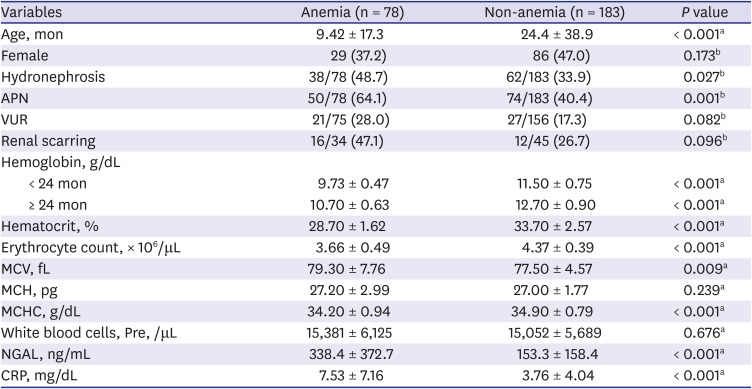


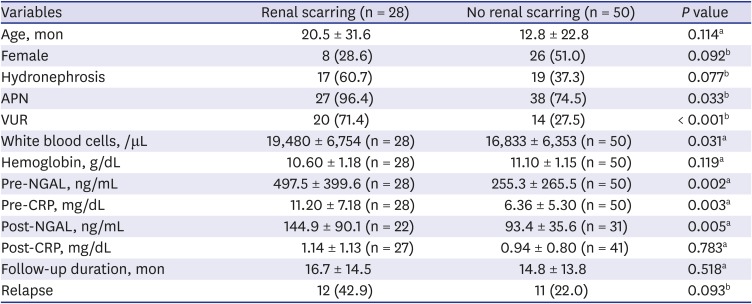
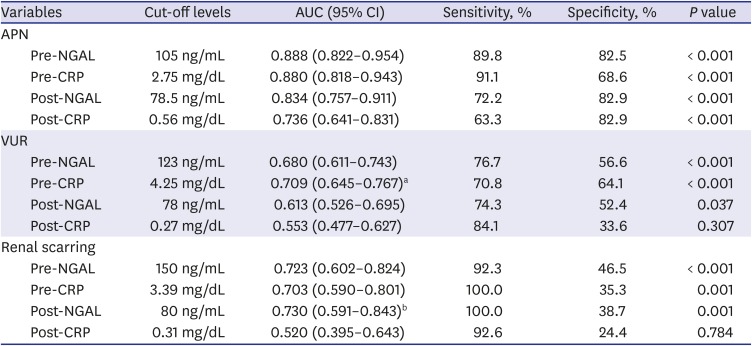
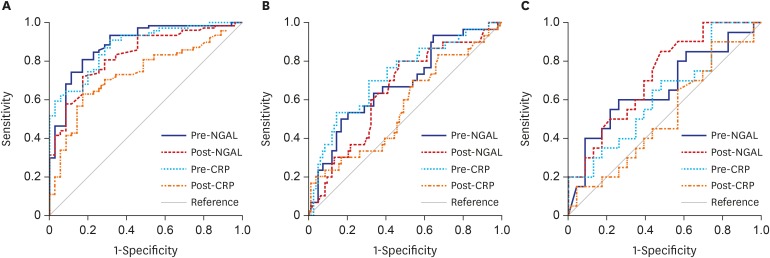
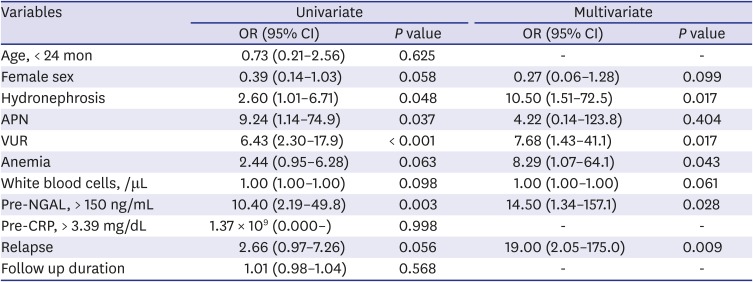
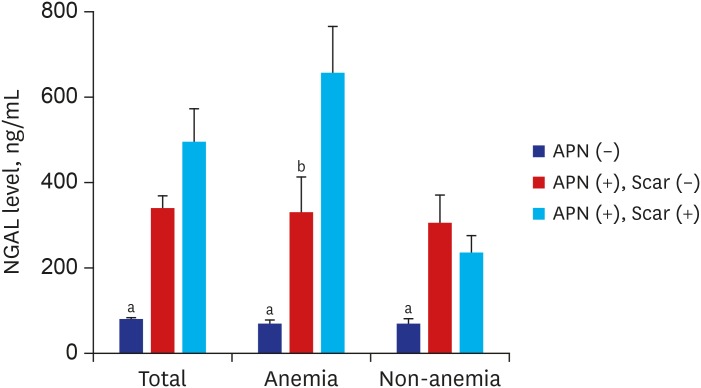




 PDF
PDF Citation
Citation Print
Print



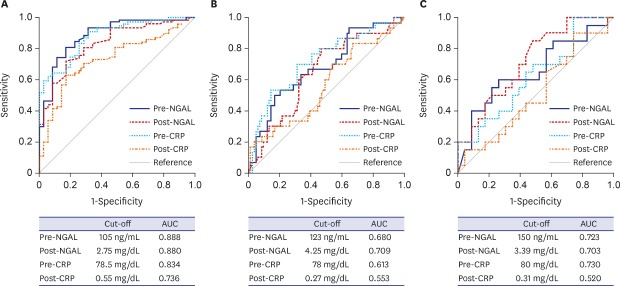
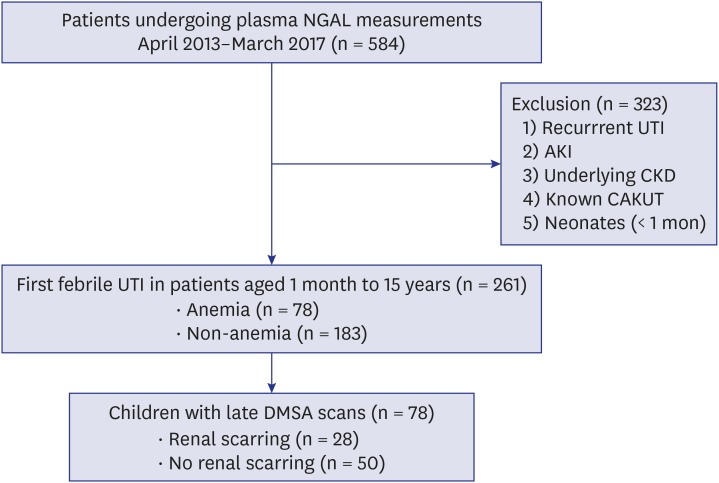
 XML Download
XML Download